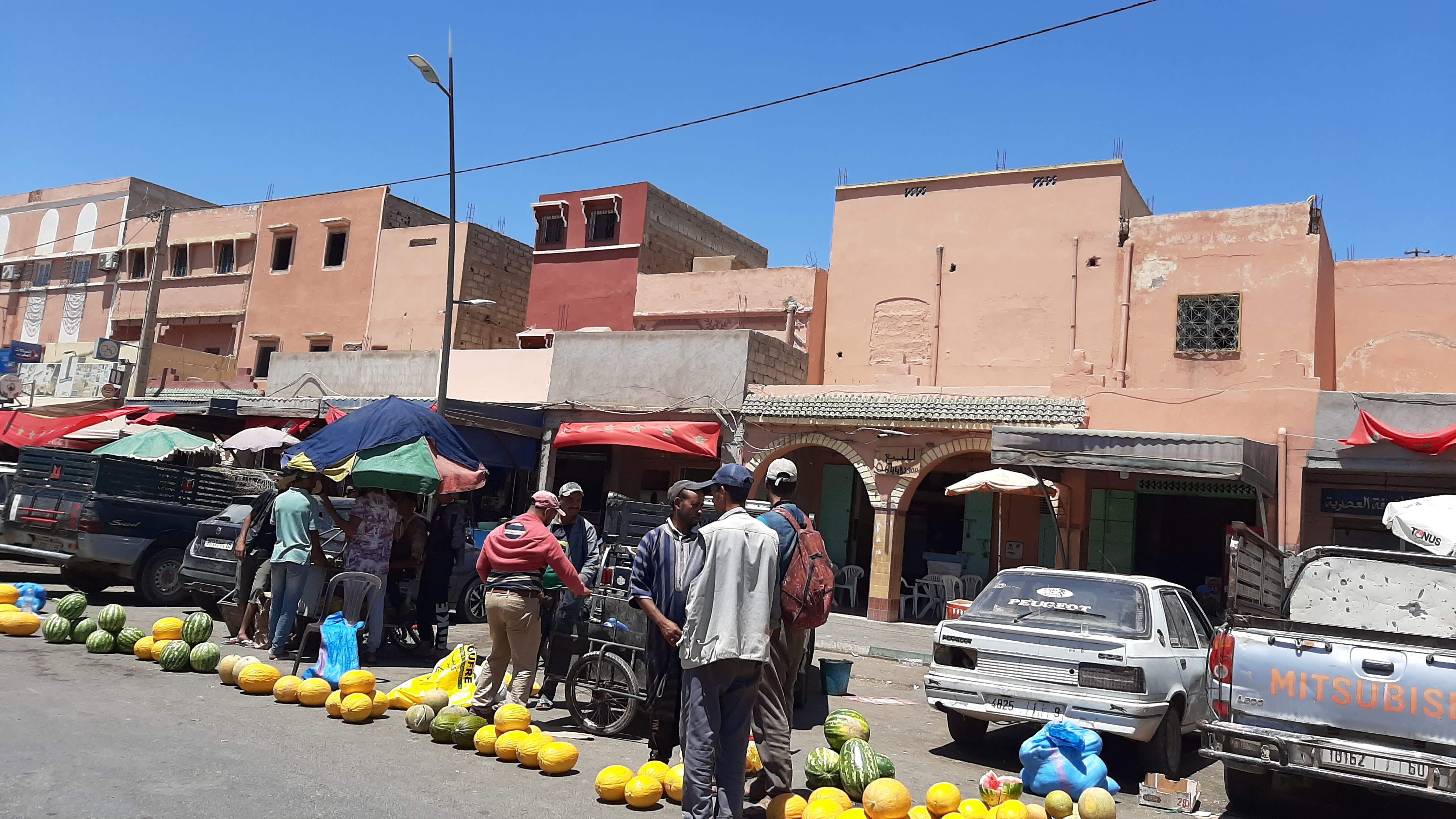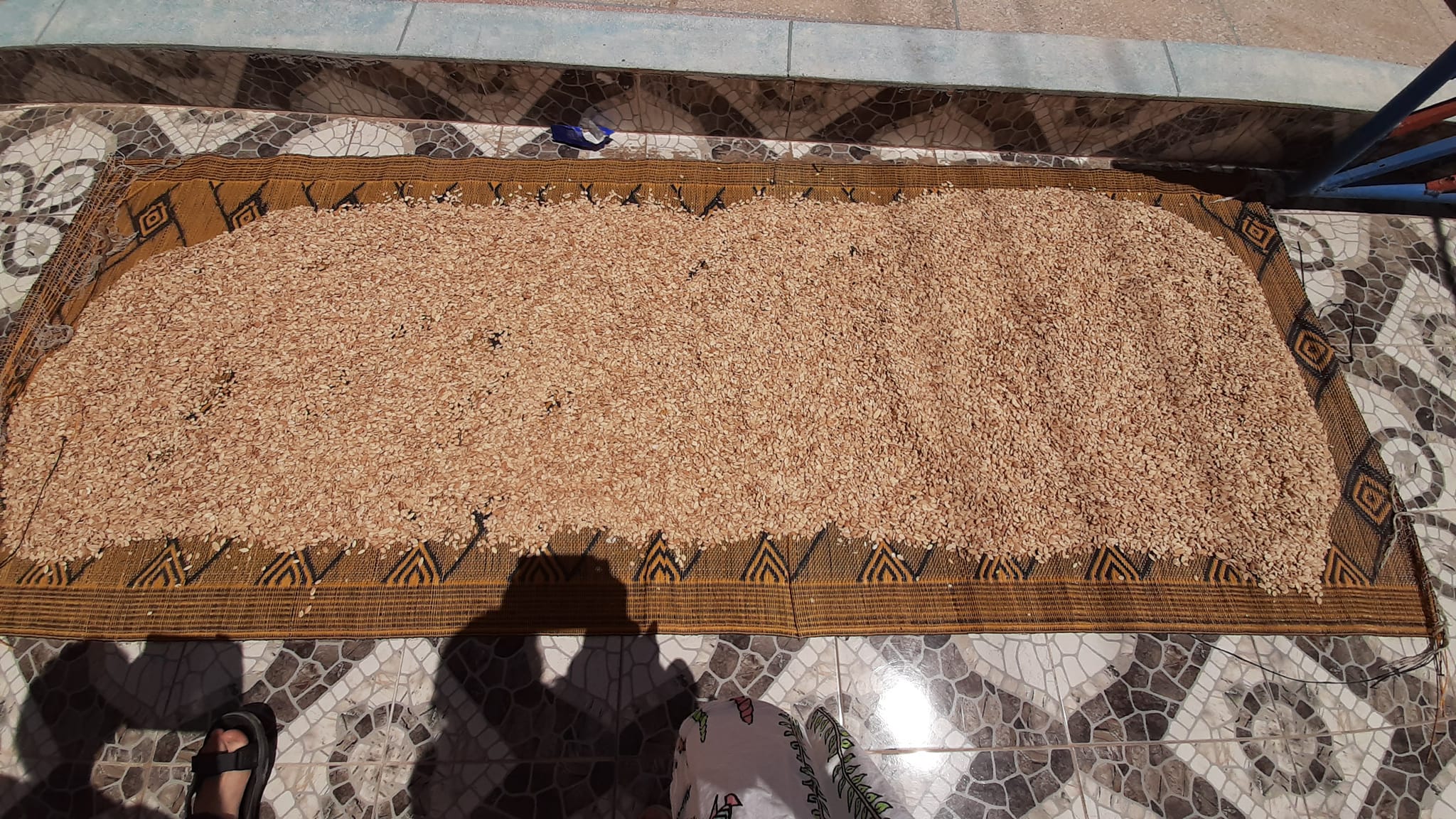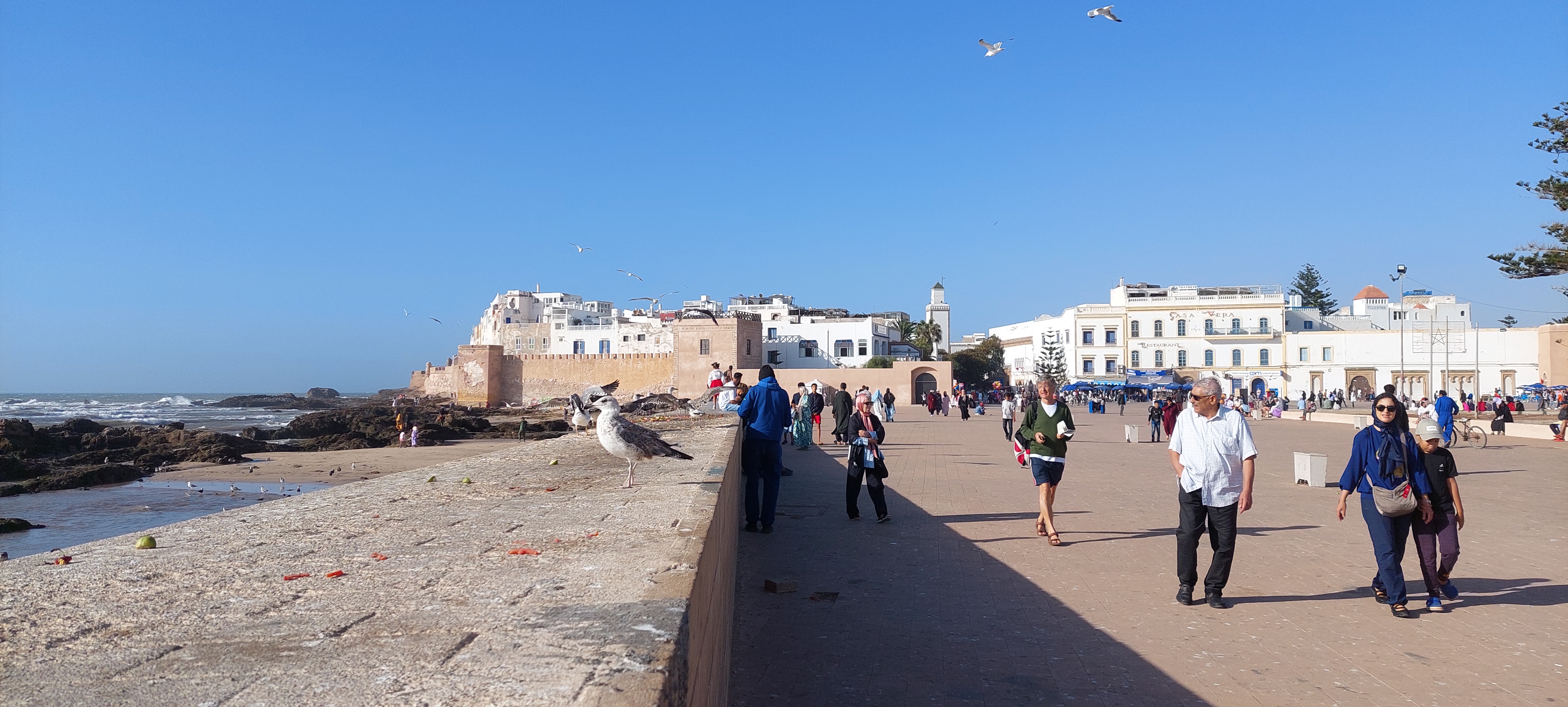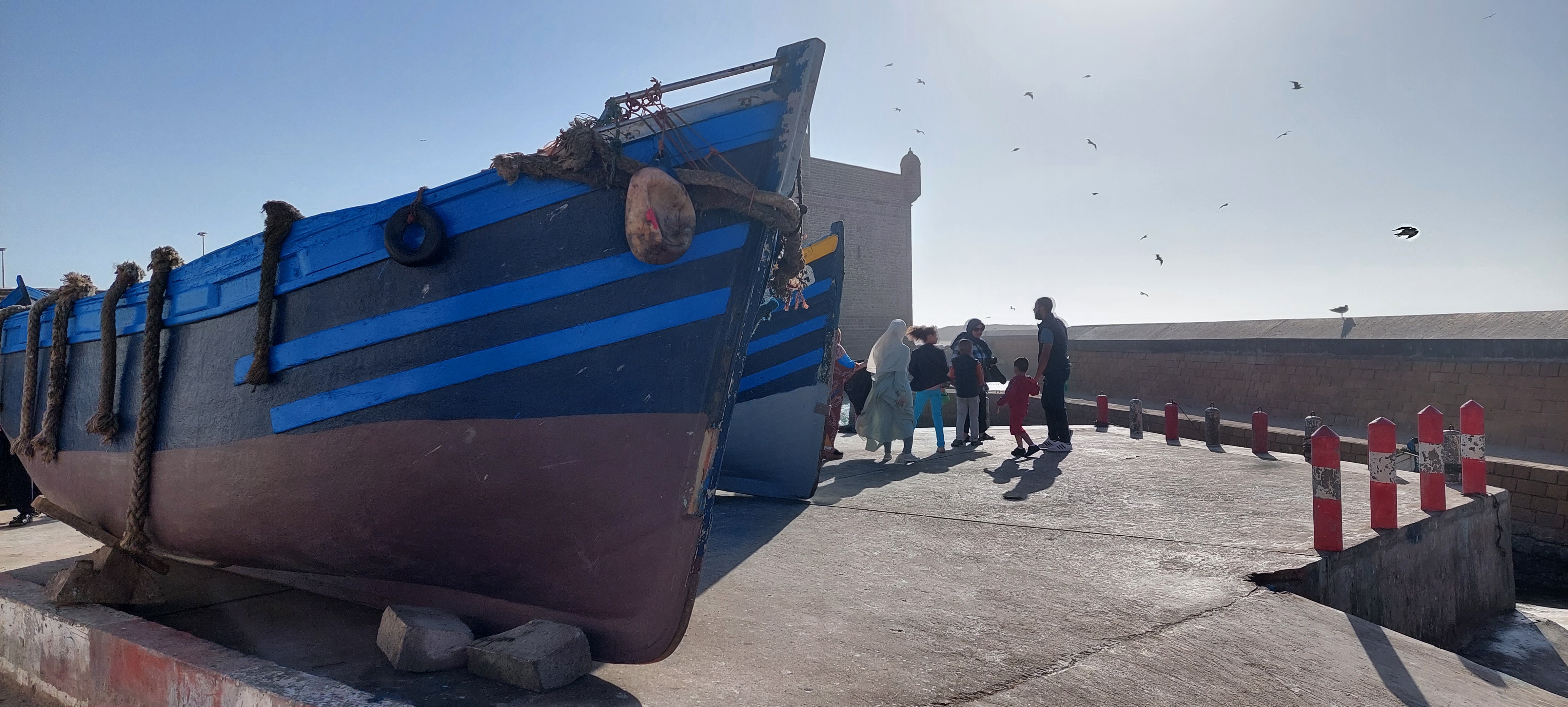A straight road leads from Marrakesh to the Atlantic Ocean. As all of us want to see the ocean, we do not mind with the distance: according to my son, the city of Essaouira, the lovely fishing town, is only a jump from Marrakesh. With car, of course, but renting a car is not easy: in the morning, nobody picks up the phone in the offices, so we have to walk to the other side of the town. Finally we get the car, it is a little worn, but perfectly-working Dacia. My husband adapts soon to the car and he picks up the local rhytm of the driving, he routinly dodges the scooters, and even his hand does not tremble, when we get out of the town and my son loosely mentions, we can count with a three and half hour route. My son says it's not long, and eventually he will be right. The road leads through that Chichaoua province, which was seriously affected in the later earthquake.
Marrakesh's traditional, red-color houses were built of mud bricks made from red soil, the red color now shines there around us, all the way to the horizon. We pass through scattered settlements, among them, people are walking at the side of the road, men in hooded jellaba, women in chador, with extra straw hat tied on their heads against the sun, wanderers, leading a donkey, and sometimes, like in the tale, alone, or two are sitting on a donkey.
Vibrant markets follow, melon sellers are sitting on the floor, among the cheap notice boards and houses with weathered plaster stands the whitewashed red or white, carefully maintened mosque, next to it the speakers attached to a pole, disguised as a palm. The muessins' prayer repeated five times a day can be heard from far away, echoed by abandoned houses beyond the borders of the villages, crumbling brick structures and lonely concrete walls.
The area of the ocean side is more green and cared, olive, eucalyptus and argan tree plantations are alternated by each other. We stop at an argan growing, it's lunch time, the owner is sleeping on the prayer mat, a young woman is sitting in the shop. Readily, she explains in broken French, how the liquide soap, shower gel, creme against eczema is prepared from argan oil, eucalyptus, jasmine. When however we question about the goats, she protests in confusion. My children would like very much to see goats climbing on the argan trees for the delicious crop. However, we finally don't mind, that the traditional method, when the crop, before the preparation, passes through the alimentary canal of the goat, is not followed in every farm.
Arriving in Essaouira, the ocean's wind and smell hits me immediately. It is buzzing among the blue-white walled houses, in the fish selled in the fish fry, in the fish market, in the blue-glazed boats queuing in the harbour, and in the tiny ships in the wood bazaar. On the shore, huddling women are wrapping in long veils, around them, in the sand childrens are playing, the men are also in kaftan, only the bolder boys are wearing swimming shorts. The waves are enormous, we sit on the coast, slowly the hot caramellised peanut, which we bought from a Senegalese boy, runs out, we have to go. Too soon, as always.
In the desert at the evening the colours are fading. In the houses without roof, a light is blinking. Nearby, a soccer goal without a net, the boys are kicking the ball, elsewhere girls are sitting, covered from top to the toe, in front of them there is the greyish-red glowing desert, they are looking into the distance, into the descending sun behind the Atlas Mountains. Four weeks are remained, while one night the land will move under them, and the mud-brick walls without a base will collapse. It is getting dark suddenly, the sun is setting fast over the desert.
Anna Somfai


The crop of the argan trees


Essaouria
If you would like to read about the sights of Morocco, visit our Morocco page!